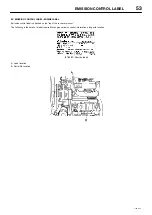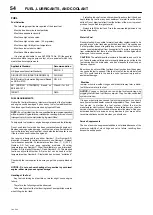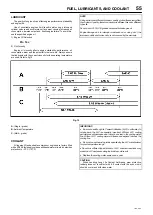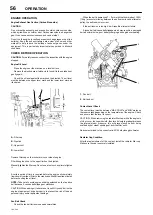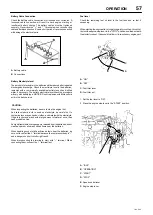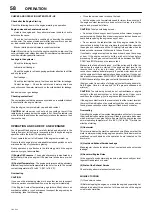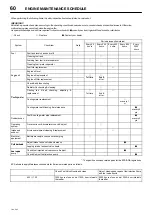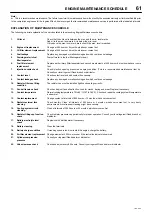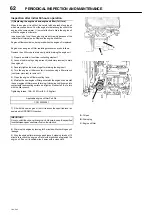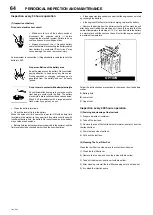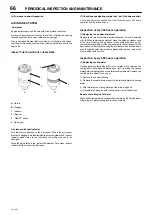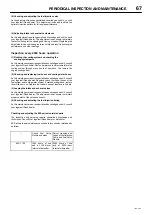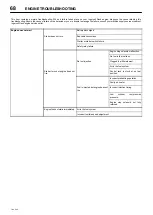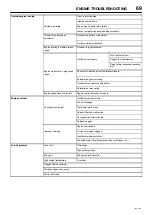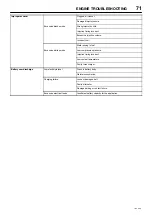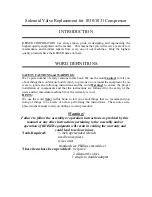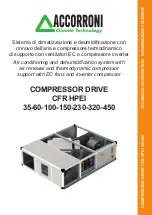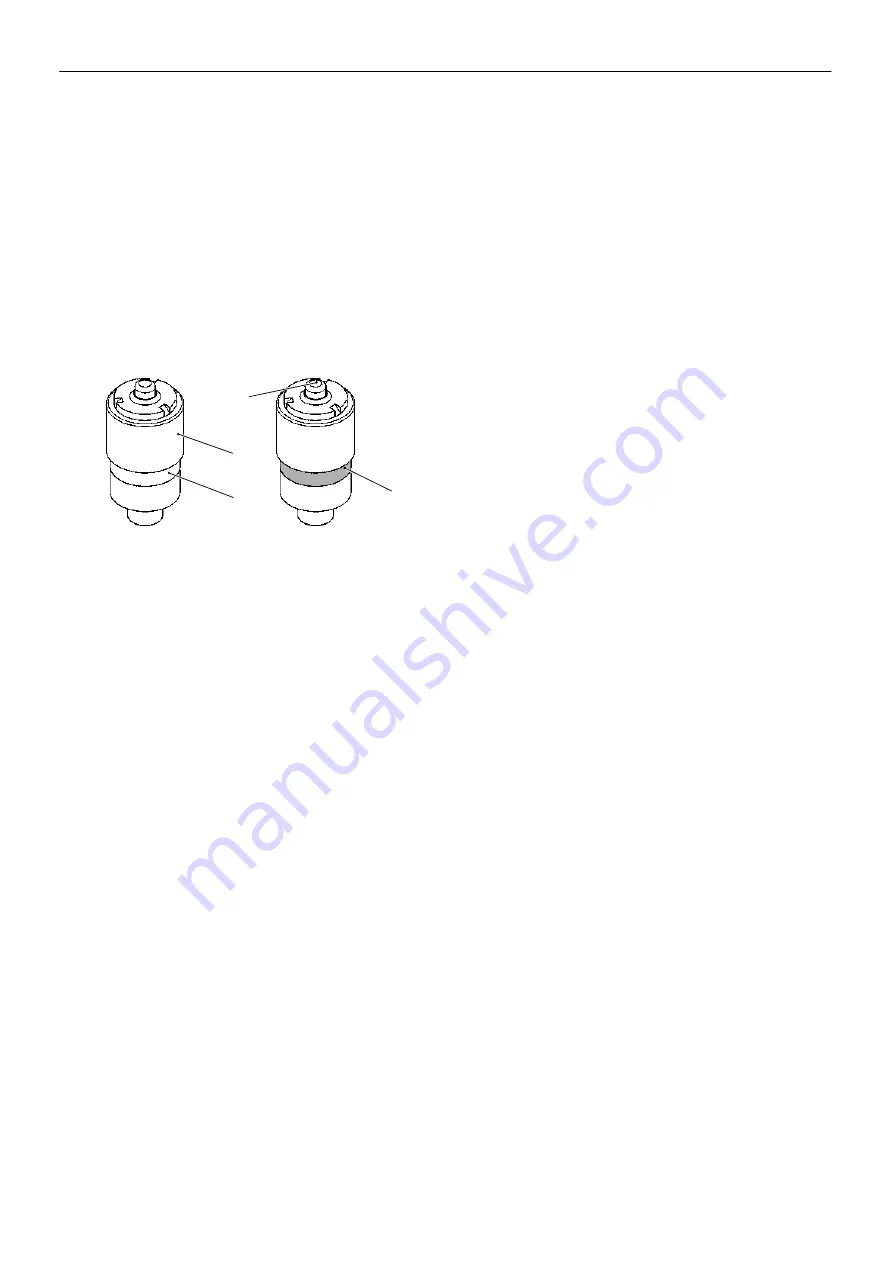
66
PERIODICAL INSPECTION AND MAINTENANCE
.
7/20, P65
(6) Air cleaner element inspection
AIR INTAKE SYSTEM
Air cleaner
Engine performance and life vary with the air intake conditions.
A dirty air cleaner element reduces the amount of intake air, causing
reduced engine output and possible engine damage.
Also, a damaged element leads to abrasion of cylinders and valves,
resulting in increased oil consumption, reduced output and shortened
engine life.
INSPECT THE CONDITION OF THE ELEMENT.
A
B
4
1
2
3
A
Normal
B
Clogged
1
Indicator
2
Window
3
“RESET” button
4
Red signal
Air cleaner with dust indicator
This indicator is attached to the air cleaner. When the air cleaner
element is clogged, air intake resistance becomes greater and the dust
indicator signal turns to red indicating the element needs to be
changed.
When the signal turns to red, replace the element. Then press the dust
indicator button to reset the indication.
(1) Checking and adjusting cooling fan V
−
belt (2nd time and after)
Check and adjust the cooling fan V
−
belt tension every 200 hours
operation from 2nd time and on.
Inspection every 400 hours operation
(1) Replacing the air cleaner element
Replace the air cleaner element periodically even if it is not damaged
or dirty. When replacing the element, clean the inside air cleaner case
at the time. If having the air cleaner with double elements, do not
remove the inner element. If the engine output is still not recover (or the
dust indicator still actuates if having the air cleaner with a dust indicator)
even though the outer element has replaced with new one, replace the
inner element with new one.
Inspection every 800 hours operation
(1) Replacing cooling water
Cooling water contaminated
with
rust or water scale
−
reduces the
cooling effect. Even when antifreeze agent (LLC) is mixed, the cooling
water gets contaminated due to deteriorated ingredients. Replace the
cooling water at least Once a year.
1) Remove the header tank cap.
2) Remove the radiator drain plug of the radiator and drain the cooling
water.
3) After draining the cooling water, put the drain plug back.
4) Fill radiator and engine with cooling water via the header tank.
Beware of scalding by hot water
Wait until the temperature goes down before draining the Cooling water.
Otherwise, hot water may splash to cause scalding.


